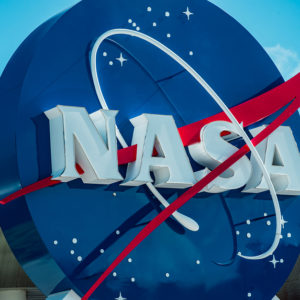America, you’ve spent more than $100 billion to design, build and operate the International Space Station. And come autumn, the orbital outpost might not have a single American on board.
That’s the harsh truth offered by the U.S. Government Accountability Office, which recently warned that “the NASA presence on the ISS is set to drop to … none by October 2020 if a Commercial Crew Program contractor is not able to begin flying.”
While NASA has relied on contractors to deliver cargo to the ISS for more than seven years, the firms that secured successful bids to transport astronauts are experiencing serious “schedule slippage.” Let’s examine why.
A decade and a half ago, George W. Bush’s administration established NASA’s Commercial Crew and Cargo Program. The shuttle was to be phased out — a long-overdue mercy killing for a legendarily underperforming, hideously expensive vehicle that had a nasty habit of annihilating its entire crew every 68 missions.
But no replacement spacecraft was available. Four years earlier, the VentureStar, a single-stage-to-orbit concept that supporters claimed would finally deliver on the shuttle’s initial promise of thrifty, regular service, got the budget ax — after burning through more than a billion dollars and failing to get a prototype to the launchpad.
Washington wasn’t about to abandon the ISS, and Russia’s Soyuz system could provide rides — for a while, and at an always-rising price. But to its credit, NASA did not waste more time and revenue on another cost-plus, Big Aerospace “solution.”
Its new approach, congressional auditors explained, was “to facilitate the private demonstration of safe, reliable and cost-effective transportation services to low-Earth orbit.”
The “change in philosophy for how (NASA) planned to service the space station” amounted to “encouraging innovation in the private sector with the eventual goal of having the government buy commercial transportation services.”
NASA’s fresh strategy, the GAO wrote, involved “a significantly lower amount of government investment as compared to the agency’s prior human spaceflight development efforts.” The goal was to “leverage private sector financial investments” and “benefit from commercial market forces.”
Innovation? Market forces? The bipartisan cabal of fedpols who protect the nation’s aerospace behemoths and their addiction to no-accountability subsidies was not pleased. When the Obama White House embraced, and enhanced, the Bush-era proposal for competition in orbital taxis, incumbency and greed struck back.
With U.S. Sen. Richard Shelby (R-Ala.), gleefully performing attack-dog duties, the firms seeking a shot at astronaut-transportation contracts were publicly belittled. And much of the funding NASA requested for grants to develop their new hardware was denied. A National Space Society position paper found that for the first five fiscal years, a mere 56 percent of the commercial-crew money NASA sought was appropriated by Congress. In its 2012 annual report, NASA’s Aerospace Safety Advisory Panel warned that from the start, the project was “funded at levels far below what would be expected for a traditional program.”
Bureaucracy erected another impediment. In 2014, SpaceX and Boeing won the inaugural — and fixed-price — contracts to ferry astronauts to and from the ISS. Then the red-tape nightmares began.
In a 2016 report, NASA’s inspector general found “significant delays in … evaluation and approval of … hazard reports and related requests for variances from NASA requirements that increase the risk costly redesign work may be required late in development, which could further delay certification.
Although NASA’s goal is to complete its review within eight weeks of receipt of a hazard report, the contractors told us reviews can take as long as six months.”
To be sure, SpaceX and Boeing bear some blame for what has become a very unfortunate three-year delay. (The former’s founder and CEO is notorious for making grandiose predictions of stunning accomplishments that come to fruition well past his estimated timelines.)
But that’s no reason to scrap commercial crew. It still holds the promise of more-affordable spaceflight. Look no further than the cargo runs SpaceX and Orbital Sciences Corporation make to the ISS.
A deep dive by NASA’s Edgar Zapata concluded that development and operation of the Commercial Resupply Services program yielded “significant advances in affordability by any measure.”
If the shuttle had continued to fly, the cost to bring a kilogram of cargo to the ISS would have been $272,000. In the real world, Orbital did the job for $135,000. SpaceX was cheaper, at $89,000.
NASA’s experiment with competitively bid orbital taxis is behind schedule — it is not a failure. If taxpayers must be made to support manned spaceflight, they deserve a good deal.

